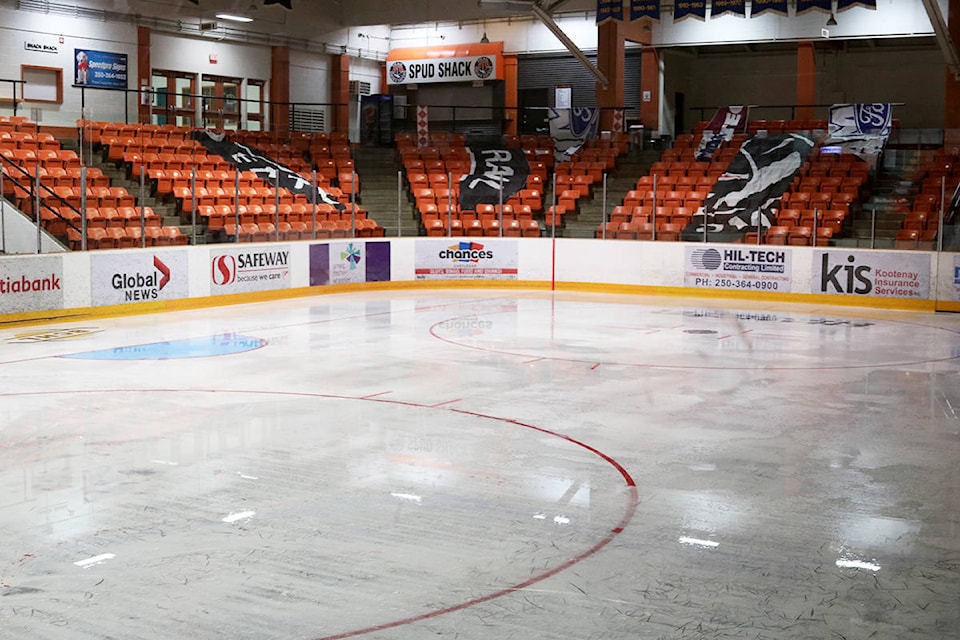The Trail Memorial Centre (TMC) was one of 180+ site inspections carried out by WorkSafeBC this year in wake of an ammonia leak that killed three men in Fernie last October.
Like the Fernie ice rink, ammonia is used as a refrigerant in the Trail arena.
Routine upkeep and safety checks ensure the TMC is safe, says Mayor Mike Martin.
“We are confident that through the current maintenance procedures undertaken by a qualified contractor and staff operational training and diligence, there is sufficient oversight to ensure the safe and efficient operation of the TMC refrigeration equipment.”
A concern the inspection did reveal, however, was a high level of iron in the brine. That finding suggests rusting - or corrosion - inside ice-making equipment called the chiller.
“As a result, there is an increased level of investigation work and inspection taking place,” Martin said.
In an April 18 report to council, recreation head Trisha Davison, noted both chillers were installed almost 20 years ago and are nearing the end of “useful life.”
“The city is required to have the chillers opened up and investigated to ensure they can last another season,” she explained, mentioning the inspection could cost upwards of $15,000.
Best case scenario is for the chillers to last one more season, Davison said.
“Worst case scenario, the chillers are opened up and it is found that the corrosion is significant and Technical Safety BC will not let us put them in operation,” she clarified. “Middle ground would be that we are given permission to operate next season, but with the requirement to do monthly test on the brine to ensure the corrosion doesn’t continue to significantly increase. We’d advise Technical Safety BC if any abnormal monthly readings came back through the year.”
Davison added, “Efforts are being made to expedite the investigation so we know what we are dealing with.”
Council’s primary role in these situations is to work with city staff to ensure there is appropriate oversight and follow-up of any recommendations that come out of inspections, said Martin.
“To ensure ongoing compliance with the required regulations to operate the ice plant and ensure the safety of staff and the public.”
Beefed up inspections also led to the re-evaluation of Trail’s community emergency plan.
“In the event of a major ammonia leak, emergency response plans need to identify how communication will occur with occupants within a certain perimeter of the facility,” said Martin.
“We have a defined plan and as with all plans, as circumstances dictate, it is under review to determine if there are improvements that can be made based on the learning of others. Currently the plan is also being reviewed by our insurance provider.”
WorkSafeBC and Technical Safety BC are using significant caution when evaluating ammonia plants to ensure the safety of staff the general public, Martin concluded.
“Through inspections undertaken by Technical Safety BC, the refrigeration plant at the TMC is certified with Risk Assessed Status which confirms compliance with the highest standards of arena refrigeration safety and regulatory compliance.”
Rossland is another city actively dealing with recommendations from WorksafeBC following an arena inspection in January.
Shortly after, council was blind-sided by a list of costly problems mainly with the rink’s ventilation and exhaust system, says Mayor Kathy Moore.
Before required upgrades begin this summer, the first step is to refine what actually has to be done in conjunction with WorksafeBC, Moore told the Times.
Based on the initial report, the city was handed an estimate of $191,000.
“Which I rounded it to $200,000 because bids have a funny habit of never coming in lower than original estimates,” Moore said. “But we can always hope. Then we have to get a tender prepared and awarded, and hopefully we can find someone to do the work.”
Cash-strapped, the city looked for grants to help cover costs.
“But we were not successful as these are mostly maintenance-type issues that grants don’t cover,” Moore said.
Instead, council pulled $70, 000 from reserves and re-worked its financial plan to come up with another $40,000.
“That leaves $90,000 that we are hoping the community, led by our Arena Task force, will crowd source.”
(A go fund me page has been set up: here)
The goal is to have the job completed before the arena’s opening day in October.
Another local rink does not use ammonia refrigeration like Rossland and Trail, nevertheless an official safety probe was still carried out.
No major red flags were raised in Beaver Valley Arena operations following a recent inspection by Technical Safety BC, says regional facilities manager Mark Daines.
“At the Beaver Valley Arena we don’t use ammonia, we use a refrigerant called Freon,” Daines explained. “It has been a part of our refrigeration system since Day One.”
He says Freon gas is not fatally harmful but it poses serious threats to the health of heart patients.
“Freon is primarily an asphyxiant which displaces oxygen causing dizziness and suffocation in very high concentrations,” he said. “And because it is a heavy gas, it settles to the floor.”
In the event of a potential gas leak, the Beaver Valley Arena has an emergency preparedness plan in place.
“Staff is trained in what to do if there is a gas leak such as shutting the system down and evacuating the building,” Daines said. “Our system is hardwired with a gas leak detection system that alerts a monitoring company who directly sends a call to 9-1-1 and dispatches emergency services and staff. In addition, we have audible and visual alarms outside the compressor room where the refrigeration plant is located so that staff working outside of the compressor room can be alerted to a leak.”
